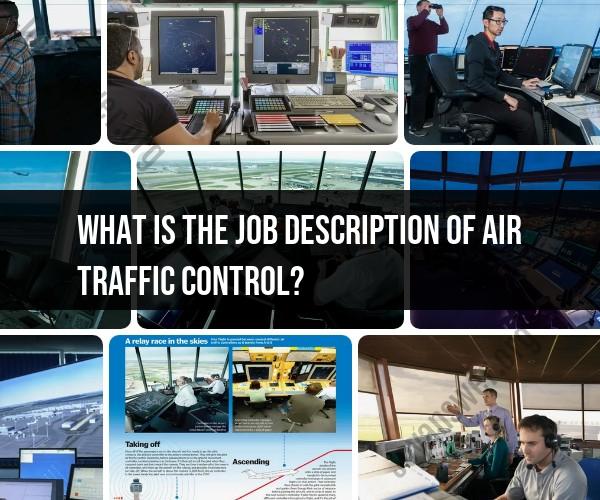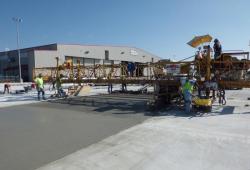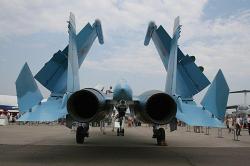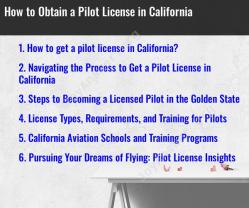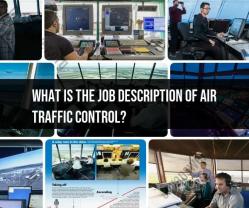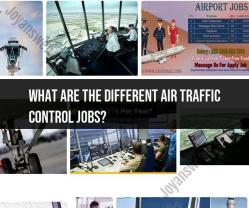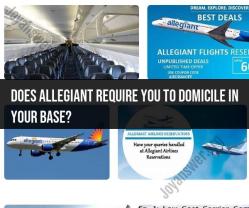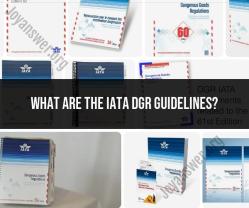What is the job description of air traffic control?
Air traffic controllers play a critical role in ensuring the safe and orderly movement of aircraft in the airspace and at airports. Their job description includes a range of duties and responsibilities to manage and coordinate air traffic. Here are the key aspects of an air traffic controller's job:
1. Communication: Air traffic controllers use radio communication to maintain contact with pilots. They provide instructions, clearances, and advisories to ensure safe separation between aircraft. They must also relay information to other air traffic control units and facilities.
2. Aircraft Separation: Controllers are responsible for maintaining minimum separation distances between aircraft, both laterally and vertically. This involves providing headings, altitudes, and speeds to keep aircraft safely spaced.
3. Flight Coordination: Controllers manage the flow of aircraft into and out of their sector or airport. They sequence arrivals and departures, provide traffic advisories, and coordinate handoffs to other controllers.
4. Weather and Safety: Monitoring and reporting adverse weather conditions is crucial. Controllers provide weather information to pilots and advise them on any changes in conditions that may affect their flights. They are also responsible for responding to safety-related issues and emergencies.
5. Aircraft Identification: Controllers use radar and other surveillance tools to identify aircraft and track their movements. This helps ensure that each aircraft is correctly identified and separated from others.
6. Traffic Management: Air traffic controllers manage traffic during peak hours, adverse weather, or other challenging conditions. They may implement ground stops, holding patterns, or other measures to control the flow of aircraft.
7. Clearances and Permissions: Controllers issue takeoff and landing clearances, as well as instructions for departures and arrivals. They must ensure that all clearances are correctly understood and executed by pilots.
8. Crisis Handling: In emergency situations or when communication is lost, controllers are trained to provide instructions to pilots to help them manage critical situations. They may also coordinate with emergency services during crises.
9. Coordination with Other Units: Controllers work closely with other air traffic control units, including tower controllers, approach and departure controllers, and en-route controllers, to ensure seamless transitions for aircraft as they move through the airspace system.
10. Documentation and Record-Keeping: Detailed records of each aircraft's movements, instructions, and interactions are maintained for future reference, investigation, and audit purposes.
11. Stress Management: Air traffic control can be a high-stress job due to its critical nature. Controllers must remain focused and make quick decisions, especially during peak traffic or emergencies.
12. Continuous Training and Certification: Air traffic controllers undergo rigorous training and must maintain certification and proficiency in their job. This includes regular evaluations and assessments.
Air traffic controllers work in various environments, including control towers, radar facilities, and en-route centers. Their responsibilities are essential for aviation safety and efficiency, and they play a vital role in the global aviation system.
What is the role and responsibilities of an air traffic controller?
An air traffic controller is responsible for the safe and efficient flow of air traffic. They use radar and other equipment to track aircraft and issue instructions to pilots to ensure that they maintain safe separation from each other. Air traffic controllers also work to minimize delays and ensure that flights arrive and depart on time.
How do air traffic controllers ensure the safe and efficient flow of air traffic?
Air traffic controllers use a variety of methods to ensure the safe and efficient flow of air traffic, including:
- Radar and other equipment: Air traffic controllers use radar and other equipment to track aircraft and see their location, altitude, and heading. This allows them to identify potential conflicts and issue instructions to pilots to avoid them.
- Separation standards: Air traffic controllers must maintain safe separation between aircraft at all times. This means ensuring that there is enough space between planes to prevent a collision.
- Sequencing: Air traffic controllers sequence aircraft to ensure that they land and depart in a safe and orderly manner.
What qualifications and training are required to become an air traffic controller?
To become an air traffic controller, you must typically meet the following requirements:
- Be a U.S. citizen
- Be at least 18 years old
- Have a high school diploma or equivalent
- Pass a background check and medical exam
You can also train to become an air traffic controller through the following programs:
- Air Traffic Collegiate Training Initiative (AT-CTI): The AT-CTI program is a two-year program that trains students to become air traffic control specialists. The program is offered at selected colleges and universities.
- Federal Aviation Administration (FAA) Academy: The FAA Academy is a nine-week program that trains students to become air traffic control specialists. The academy is located in Oklahoma City, Oklahoma.
After completing training, all new air traffic controllers must complete on-the-job training. On-the-job training typically lasts several months.
Can you explain the challenges and stress factors in air traffic control?
Air traffic control is a challenging and stressful job. Air traffic controllers must be constantly aware of the location and movements of all aircraft in their airspace. They must also be able to make quick decisions and react to unexpected events.
Some of the specific challenges and stress factors in air traffic control include:
- Heavy traffic: Air traffic controllers often have to deal with heavy traffic, which can make it difficult to maintain safe separation between aircraft.
- Bad weather: Bad weather can also make it difficult to control air traffic. Air traffic controllers must be able to adjust their procedures to account for bad weather conditions.
- Emergencies: Air traffic controllers must be able to handle emergencies, such as engine failures or medical emergencies on board aircraft.
What are the different types of air traffic control positions and their specific duties?
There are a variety of different air traffic control positions, each with its own specific duties. Some of the most common air traffic control positions include:
- Tower controllers: Tower controllers are responsible for guiding aircraft as they take off and land at airports.
- Approach controllers: Approach controllers guide aircraft as they approach and land at airports.
- Departure controllers: Departure controllers guide aircraft as they take off and depart from airports.
- En route controllers: En route controllers guide aircraft as they fly between airports.
- Terminal controllers: Terminal controllers guide aircraft as they arrive and depart from airports.
Air traffic controllers play a vital role in the safety and efficiency of air travel. They are highly skilled professionals who are responsible for the safe passage of millions of passengers each year.
